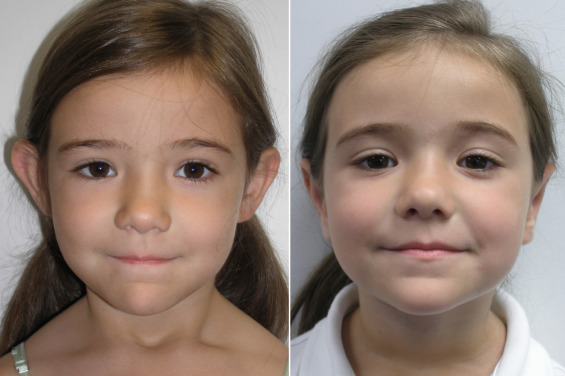Ear Reconstruction in Bahamas
Search and Compare the Best Clinics and Doctors at the Lowest Prices for Ear Reconstruction in Bahamas

Find the best clinics for Ear Reconstruction in Bahamas
No clinics available
Israel offers the best prices Worldwide
Price: $ 14,755

- Home
- Bahamas
WHY US?
At Medijump, we're making medical easy. You can search, compare, discuss, and book your medical all in one place. We open the door to the best medical providers worldwide, saving you time and energy along the way, and it's all for FREE, no hidden fees, and no price markups guaranteed. So what are you waiting for?

Free

Best Price

Widest Selection

Risk-Free
What you need to know about Ear Reconstruction in Bahamas

Ear reconstruction is a surgical procedure to rebuild a damaged ear caused by trauma, accident or cancer surgery, as well as misshapen or underdeveloped ear due to a disorder present at birth (congenital). There are several types of ear reconstruction, including microtia repair (creating an ear for people with an inborn condition where their outer ears are malformed, small, or absent), otoplasty (to make the earless prominent), and ear defect repair (to restore the form and function of the outer ear after trauma, accident, or cancer surgery).
What Does the Procedure Involve?
All types of ear reconstruction can be performed under local or general anesthetic. The first stage is creating the ear, your surgeon may use your own tissue, such as cartilage or skin to reconstruct the ear or use a prosthetic. Then, the next stage is putting the ear into position, so that it appears and looks just like a normal ear would.
How Long Should I Stay in Bahamas for a Ear Reconstruction Procedure?
Most people can leave the hospital on the same day as the procedure. However, adults with complex cases and children need to stay in the hospital overnight. After you are discharged, you should aim to stay in Bahamas for 5 to 7 days for follow-up checkups and removal of stitches.
What's the Recovery Time for Ear Reconstruction Procedures in Bahamas?
You should plan to return to work within 5-7 days if your job is not physically demanding. The total recovery time can vary from two to six weeks. Ask your doctor when you can resume your daily activities, such as exercises and heavy lifting.
What sort of Aftercare is Required for Ear Reconstruction Procedures in Bahamas?
During your recovery period, you need to avoid sleeping on your side and wear a loose headband that covers your ears at night to keep pressure off your ears. Wear button-down shirts or shirts with loose-fitting collars so you do not have to pull anything up over your head.
What's the Success Rate of Ear Reconstruction Procedures in Bahamas?
Ear reconstruction has a high success rate of more than 90% and most patients said the result was excellent. Although very rare, there are side effects and risks to be aware of, including infection, scarring, and blood clots. Some people may not be satisfied with the result because the ear placement is asymmetrical or overcorrected, in this case, consult with your surgeon about the possibility of revision surgery.
Are there Alternatives to Ear Reconstruction Procedures in Bahamas?
Although ear reconstruction is the best option for ear deformity, those who are not able to undergo this procedure can opt for an alternative which is prosthetic ears, which involves inserting titanium pins into the skull to clip the prosthetic ears.
What Should You Expect Before and After the Procedure
Before an ear reconstruction surgery, you may have a birth defect that made your ear malformed or absent, your ears may stick out too far from too much, or too large in proportion to your head. After an ear reconstruction surgery, you will notice a change in the appearance of your ears immediately. The changes are permanent and natural.
Whilst the information presented here has been accurately sourced and verified by a medical professional for its accuracy, it is still advised to consult with your doctor before pursuing a medical treatment at one of the listed medical providers
No Time?
Tell us what you're looking for and we'll reachout to the top clinics all at once
Enquire Now

Popular Procedures in Bahamas
Prices Start From $370

Prices Start From $28

Prices Start From $167

Prices Start From $120

Recommended Medical Centers in Bahamas for procedures similar to Ear Reconstruction

- Interpreter services
- Translation service
- Religious facilities
- Medical records transfer
- Medical travel insurance
- Health insurance coordination
- TV in the room
- Safe in the room
- Phone in the room
- Private rooms for patients available
Ear Reconstruction in and around Bahamas
The Bahamas is an archipelago and country on the northwestern edge of the West Indies. Having more than 700 beautiful, palm-fringed islands, this country is known for its stunning beaches, coral reefs, crystal clear waters, a myriad of bird species, and historic towns. With everything that it has to offer, it is easy to see why the Bahamas welcomes millions of visitors each year. Besides honeymooners, divers, and beach-goers, the Bahamas is also popular among medical tourists thanks to its exceptionally high-quality services. The country’s booming medical tourism industry is driven by its highly-skilled medical professionals and state-of-the-art equipment, combined with cost-effective medical care and the opportunity to recuperate in beautiful surroundings. Cosmetic and plastic surgeries, total knee replacements, and cardiac surgeries are some of the most popular procedures in the Bahamas.
Popular Parts of the Bahamas
Nassau, the capital of the Bahamas, is one of the chief pleasure resorts in the world. Known as the Bahamas’ crown jewel, it boasts a vibrant culture, breathtaking natural landscape, and rich history. Its signature attraction is the beaches, and the most popular is Cable Beach. With striking white sands and blue waters, this peaceful and beautiful beach is the perfect place to relax and sunbathe. Freeport is also a famous destination in the Bahamas. With its diving sites and world-class restaurants, there are many things to see and do in this city. The main draw of Freeport is its beaches. Some of the most popular are Taino and Fortune Beach.
Weather and Climate in the Bahamas
The Bahamas experiences a tropical climate and the average temperatures will stay the same all year round, between 24°C - 29°C. There are generally two seasons in the country: dry and wet. The dry season, from November to June, is mostly sunny and pleasant. However, it tends to be very crowded during this season, especially from mid-December to mid-April. The wet season spans from July to November. This season sees an increase in rainfall, but there are still many sunny days. The Bahamas also has a hurricane season, which lasts from June to November.
Getting around in the Bahamas
The largest international gateway to the Bahamas is Lynden Pindling International Airport, which is located near the capital city of Nassau, in western New Providence Island. It serves flights to numerous major cities in the Americas and Europe, including New York, Atlanta, and London. The easiest and quickest way to get around is by plane, especially to travel from one island to another. In Nassau and Freeport, the main transport option is the jitneys (private minibusses). In Out Islands, no public transport is available. The best way to get around inside the islands is by taxis or rental cars. However, taxis are often quicker and easier than driving on your own. Ferries and water taxis are all available.
Tourist Visas in the Bahamas
Citizens of 120 countries, including all EU countries, Australia, Canada, China, the US, and the UK, can visit and stay in the Bahamas for up to 3 months without a visa unless stated otherwise. Nationals not listed in the visa-exempt agreement need to obtain a visa to be able to visit the Bahamas.
Additional Information
- Local Currency: The Bahamian dollar (BSD) is the official currency, which is equivalent in value to the US dollar. Bahamian dollar and US dollars are accepted interchangeably in the country.
- Money & Payments: ATMs are widely available on the major islands and can usually be found in airport terminals and at banks. Credit cards are widely accepted. Tipping is expected, usually around 15% for taxi drivers and waiters, and $1-$3 for bag porters and hotel maids.
- Local Language: English is the official language in the Bahamas.
- Local Culture and Religion: Bahamians are deeply religious and the biggest religion is Christianity. However, the constitution guarantees freedom of expression, and other religions are freely practiced.
- Public holidays: Some of the most important holidays in the Bahamas are Whit Monday, National Heroes Day, Randol Fawkes Labour Day, Emancipation Day, Independence Day, Christmas Day, Boxing Day, New Year’s Day, and Majority Rule Day.
Popular Searches
- Plastic Surgery in Thailand
- Dental Implants in Thailand
- Hair Transplant in Thailand
- Breast Augmentation Thailand
- Gastric Sleeve in Thailand
- Gender Reassignment Surgery in Thailand
- Laser Hair Removal in Bangkok
- Botox in Bangkok
- Dermatology in Bangkok
- Breast Augmentation in Bangkok
- Coolsculpting in Bangkok
- Veneers in Turkey
- Hair Transplant in Turkey
- Rhinoplasty in Turkey
- Stem Cell Therapy in Mexico
- Rhinoplasty in Mexico
- Liposuction in Mexico
- Coolsculpting in Tijuana
- Rhinoplasty in Korea
- Scar Removal in Korea
- Gastric Sleeve in Turkey
- Bone Marrow Transplant in India
- Invisalign in Malaysia
- Plastic Surgery in the Dominican Republic
- Tummy Tuck in the Dominican Republic
- Plastic and Cosmetic Surgery in Poland
- Rhinoplasty in Poland
- Hair Implant in Poland
- Dental Implants in Poland
- IVF in Turkey